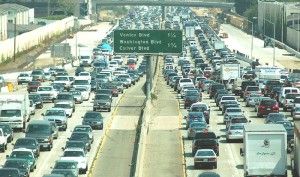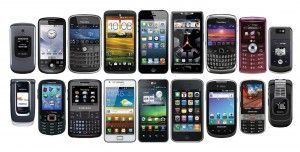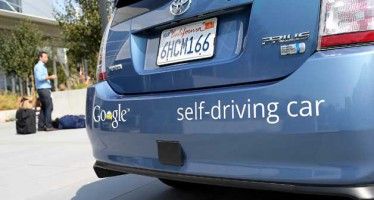Did 2006 cellphone law cut CA traffic deaths or not?
 When California approved a law in 2006 requiring that drivers could only use their cellphones hands-free beginning on July 1, 2008, state leaders patted themselves on the back for pioneering legislation that would inspire the rest of the nation and the world. At the signing ceremony for the measure, Gov. Arnold Schwarzenegger said it was certain to save lives. The bill’s author, state Sen. Joe Simitian, D-Palo Alto, had made similar claims for years before finally winning the support of the Legislature and the governor.
When California approved a law in 2006 requiring that drivers could only use their cellphones hands-free beginning on July 1, 2008, state leaders patted themselves on the back for pioneering legislation that would inspire the rest of the nation and the world. At the signing ceremony for the measure, Gov. Arnold Schwarzenegger said it was certain to save lives. The bill’s author, state Sen. Joe Simitian, D-Palo Alto, had made similar claims for years before finally winning the support of the Legislature and the governor.
Seven years after the law took effect, however, such claims are very much open to debate.
Initial results appeared positive. A 2012 University of California study credited the state law with having a dramatic effect. The results were hailed by Gov. Jerry Brown’s administration. This is from the AP report on the study:
California’s nearly four-year-old ban on drivers using handheld cellphones is saving lives, according to a University of California, Berkeley, study released Monday.
The study found that overall traffic deaths dropped 22 percent, while deaths blamed on drivers using hand-held cellphones were down 47 percent. Deaths among drivers who use hands-free phones dropped at a similar rate. …
The California Office of Traffic Safety, which sought the study, said deaths and injuries are declining in part because of an overall decrease in drivers using cellphones.
But the next year, a report by two Colorado School of Mines economists concluded there was no evidence of any positive effect.
Cellphone law effects seen as irrelevant
 A recent Sacramento Bee story didn’t even mention cellphone laws as relevant to the ebb and flow in traffic deaths, instead seeing traffic fatalities as related to the vigor of the economy.
A recent Sacramento Bee story didn’t even mention cellphone laws as relevant to the ebb and flow in traffic deaths, instead seeing traffic fatalities as related to the vigor of the economy.
It’s an unfortunate downside to the recession’s end: As more people return to work and more cars hit the road, fatal accidents are on the climb.
Nationally, road deaths jumped nearly 10 percent in the first three months of this year, according to the National Highway Traffic Safety Administration. California officials say they saw a 13 percent uptick over three recent years through 2013 and expect that trend to continue when 2014 numbers are finalized.
It’s no surprise, safety officials say.
“Realistically, when the economy started getting better, all indications from history told us there would be an upswing in fatalities,” said Chris Cochran of the state Office of Traffic Safety. …
The recent increases come after a remarkable five-year stretch in California road history. Traffic deaths dropped a dramatic 36 percent between 2006 and 2010. Slightly more than 4,300 people were killed on roads and highways in the state in 2006, but only 2,739 in 2010.
That death toll was noteworthy, the fewest road deaths in California since World War II. The factors are many. The state has largely won the battle to get people to wear seat belts. Surveys show that 97 percent of drivers in the state now buckle up. Improvements in car construction, notably airbags, have helped, as have safer road designs and years of crackdowns on drunken driving.
Since 2010, however, the death toll has ticked up annually, hitting 3,104 in 2013.
In both stories the state Office of Traffic Safety is quoted as offering definitive opinions on the reasons for traffic mayhem. But the factor the office cited in 2012 — the limits on driver cellphone use — it chose not to even mention in 2015.
Cellphones much different now than 2006
As William Saletan noted in Slate magazine last year, there’s one more complication in trying to drawn definitive lessons from California’s law:
[Laws] enacted against mobile phone use in 2006 are hopelessly out of date for dealing with mobile phone use in 2012, much less in 2014. A phone today is wildly different from what a phone was back then. It isn’t even a phone, really. It’s a computer.
Logically, limiting driver distractions should keep accidents down. But 87 months after California’s cellphone law went into effect, it’s difficult to make a solid case that it has done what Schwarzenegger and Simitian promised.
Chris Reed
Chris Reed is a regular contributor to Cal Watchdog. Reed is an editorial writer for U-T San Diego. Before joining the U-T in July 2005, he was the opinion-page columns editor and wrote the featured weekly Unspin column for The Orange County Register. Reed was on the national board of the Association of Opinion Page Editors from 2003-2005. From 2000 to 2005, Reed made more than 100 appearances as a featured news analyst on Los Angeles-area National Public Radio affiliate KPCC-FM. From 1990 to 1998, Reed was an editor, metro columnist and film critic at the Inland Valley Daily Bulletin in Ontario. Reed has a political science degree from the University of Hawaii (Hilo campus), where he edited the student newspaper, the Vulcan News, his senior year. He is on Twitter: @chrisreed99.
Related Articles
CA accelerates delayed robocar rules
Slowly but surely, driverless — or “self-driving” — cars will make their way onto California streets. Despite a string of
If CA can’t build bridge, what about bullet train through mountains?
If the state of California can’t build a bridge, how can it handle the huge technological and engineering challenge of
Cash for Grass rebates jumpstart CA drought-friendly landscaping
Californians are finding further incentives to switch out their water-thirsty lawns for more drought-tolerant landscapes. In 2014, Democratic Assemblyman Jimmy Gomez




